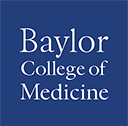Opioids and Opioid Use Disorder – Addressing the Epidemic from the Emergency Department
Needs statement
The ACGME requires that all programs “provide instruction and experience in pain management if applicable for the specialty including recognition of the signs of addiction.” This learning module addresses the need for physicians to learn how to screen for suicidality in patients before prescribing opioids.
Target Audience
Emergency Physicians, Emergency Medicine Trainees, Advanced Practitioners, Family Practitioners, OB/GYN Practitioners, Nurses, and Technicians in the Emergency Center
Learning Objectives
At the conclusion of the conference, participants should be able to:
- Identify signs and symptoms of opioid use disorder (OUD) and opioid withdrawal.
- Discuss management strategies for OUD and opioid withdrawal.
- Identify available resources for outpatient care designed for patients with opioid use disorder and refer patients to outpatient care after Emergency Department discharge.
Educational Methods
Self Study/Enduring
Activity Evaluation
Evaluation by questionnaire will address program content, presentation, and possible bias.
Activity Director
Nidal Moukaddam - [email protected]
Activity Coordinator
Sophia Schott - [email protected]
Physician
Baylor College of Medicine is accredited by the Accreditation Council for Continuing Medical Education to provide continuing medical education for physicians.
Baylor College of Medicine designates this enduring activity for a maximum of 1.25 AMA PRA Category 1 CreditsTM. Physicians should claim only the credit commensurate with the extent of their participation in the activity.
Pain Management
This presentation has been designated by Baylor College of Medicine for 1.25 credit of education in pain management and the prescription of opioids.
Available Credit
- 1.25 AMA PRA Category 1 Credit™
- 1.25 Pain Management
- 1.25 Participation

 Facebook
Facebook X
X LinkedIn
LinkedIn Forward
Forward